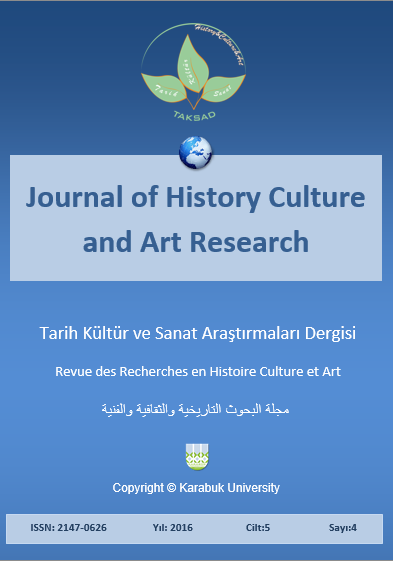The Role of Persian Historical Bath in City and Urban Life
DOI:
https://doi.org/10.7596/taksad.v5i4.622Keywords:
Historical bath, City life, Urban life, Persian bath, CultureAbstract
The importance and necessity of bath and its status in city, the role of bath in social relations, its strong tie with religious and indigenous traditions and costumes, its significant relationship with medicine and medical approaches and its presence in most of important stages of life are examples of features that place the bathes in special position. Traditional requirements and health related approaches positioned washing and bathing as one of the Iranian customs accompanying the man from birth, to even after death. Obviously such a widespread and subtle phenomenon has been manifested in all different aspects of Iranian people’s social life. Accordingly, the location of baths in the city was determined based on social relations and environmental requirements and location of the water supplying system. This study answers these questions: What has been the role and status of the Iranian historical bathes in cities and people’s life? And based on that how have been the distribution and substitution of baths? The results suggest that bath had an important role more than other public buildings and even in many cases it had been an assistant to them.
References
Akbari, Parivash (2012). “Haj Mohammad Rahim Qazvin Bath and Its Place Among The City's Public Baths in Qajar Era”. of letter Archaeology, Issue 3. second stage.
Chardin, Chardin Jean (1983). Travelogue, Part of The Isfahan City. Translated by Hussein Arizi. 2 nd Edition. Tehran: Negah Publications
Colavikho (1986). Travelage of Colavikho. Translated by M. Rajbnia. Tehran: Cultural and Scientific Publications. 115 to 130.
Dalmany, Henri René (1956). Travel Accounts from Khorasan to Bakhtiari, Translated and edited by Farah-Vashi, Translator Homayoon., four volumes, Tehran: Ibn Sina bookstore and Amir Kabir Publications.
Ein Al Soltan & Gahraman Mirza (1995-1997). Ein Al Soltan memorial Newspapers, Vol 1. Edited by Salur, M-Afshar. Iraj Tehran.
Fakhar Tehrani, Farhad. Iranian Architecture in Islamic Period. Islamic Guidance in Collaboration with Jahad Daneshgahi.
Figueroa, Don García Disylva (1984). Figueroa’s Travelague the Spanish Ambassador at the Court of Shah Abbas. Translated by G. Sammie. Tehran: Nashreh No Publication.
Mullaei Tavani, Ali Reza & Gholampour, Meysam (2014). “Bath and Taking Bath in Iranian Culture”. QajarIyeh. 121-141.
Nadim, Mostafa, Latifi Shirdar, Tagi (2015). “Recognition of Local History of Savadkooh: Case Study on Local Public Baths”. Research on Local History in Iran. (7). 108-118.
Najmi, N. (1986). Ancient Iran -Ancient Tehran. 3. Edition. Tehran: Janzadeh Publishion.
Naraqi, Hassan (1970). “Historical Baths of Shah Fin Garden in Kashan”. Art and People. 101.
Othman, Mohammad Abdul-Sattar (1997). Madineh Islami, Translated by Ali Cheragi. Amir Kabir Publications
Rashid, Najafi, Atieh (2010). “The Study of the Situation of Historical Baths of Tabriz City”. Saffeh. (51). 61-74.
Ravandi, Mortaza (1993). Social History of Iran, Volume V: The Economic Life of the Iranian Economy from the Beginning to the Present. Tehran: Roozbahan.
-Serena, Carla (1983). People and Religion in Iran. Translated by Ali Asghar Saeedi. Tehran: Pilgrims.
Shabani, Emomali-Jabareh, Saideh (2014). “Bath and social functions in medieval period of Iran”. Study of Social and Economic History. (1) 89–109.
Sultani, Hossein-Tabriz (1997). Iran adobe architecture firm. Cultural Research Bureau in Tehran.
Tabassi, M. (2007). Identification and Analysis of Factors Affecting the Physical and Functional Changes and Architectural Performance in Iranian Bath Safavid Era. PhD Thesis in art Research.
Downloads
Published
How to Cite
Issue
Section
License
All papers licensed under Creative Commons 4.0 CC-BY.- Share — copy and redistribute the material in any medium or format
- Adapt — remix, transform, and build upon the material for any purpose, even commercially.
Under the following terms:
Attribution — You must give appropriate credit, provide a link to the license, and indicate if changes were made. You may do so in any reasonable manner, but not in any way that suggests the licensor endorses you or your use.
- No additional restrictions — You may not apply legal terms or technological measures that legally restrict others from doing anything the license permits.







